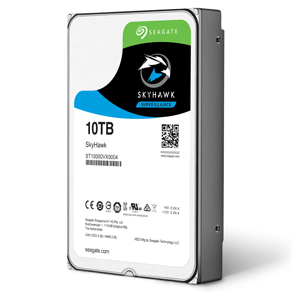Are surveillance hard drives more important than you think? asks Andy Palmer, Head of Surveillance at Seagate.
Why is storage so important? It’s obvious that technology touches almost every aspect of our lives – and as a result, the amount of data we are creating daily is growing at an incredible rate. But it’s not movie downloads, Instagram or even the Internet of Things that dominates data creation: almost half of the world’s data is generated through video surveillance.
According to a report from MarketsandMarkets, video surveillance storage solutions and services are experiencing a rapid adoption in the industry, estimated to grow 16.3 per cent each year until 2018, eventually reaching a market size of $10.41 billion. In addition to the specific image content of surveillance cameras, there are huge amounts of data surrounding it – everything from the location, to the time of day, the duration of the video, and more. And the amount of data in the image itself is getting larger, as high-definition resolution camera are becoming more and more common, and panoramic and 4K cameras are two further storage-hungry high-growth categories. Because of this, the quality and amount of data that needs to be stored will only increase and the surveillance storage market has had to evolve to respond to this changing need.
Not “one size fits all”
With this in mind, a one-size-fits-all storage solution simply won’t work. Storage should be one of the first things that installers and their customers consider – especially as more and more companies will want to analyse data over longer periods. Relying on traditional desktop drives for video recording surveillance is just not good enough. These drives were never built to withstand the constant data writing involved with capturing multiple streams of high definition video. The rigours of today’s video surveillance require true 24×7 operations, 365 days a year, and so it stands to reason that surveillance systems need drives that can handle that level of workload effectively.
One of the more critical areas that can be overlooked in surveillance storage relates to the reliability and rescue capability of storage drives. The fundamental value of data is so widely apparent, that its loss may have significant consequences; this is particularly true in an area where the maintenance of data is often strictly regulated. This inevitably means it’s crucial that the storage drive protecting that data is fit for purpose.
4K cameras and drone surveillance are fantastic but they’re irrelevant if the hard-drive storing the video footage fails. Beyond selecting the right drive, installers and end-users need to take steps to ensure that the chosen storage solution is covered by a data recovery service. Better safe than sorry.
How will surveillance and storage develop? As the surveillance industry evolves, the changing uses of surveillance footage – not only for security, but for behaviour analysis and other purposes – means that video storage solutions must fit the purpose of whatever system they support. As we look ahead to the next few years and start thinking about how the security market will evolve, video analytics and business intelligence will continue to be the key game changers. Video analytics has been around in some form for a while, but innovations in video coding and higher resolution, 4K cameras are creating an intelligence environment that goes well beyond traditional alarm zones or restricted areas.
This means video surveillance experts will look to move away from surveillance being viewed solely as a loss prevention tool, and will start to focus on how it can add value to the business itself – turning raw data into useful information and maximising productivity by allowing them to make better business decisions.
What do you need to look for in surveillance storage? If you’re thinking to expand, upgrade or refresh your surveillance systems, remember to keep data storage at the forefront of your mind and choose any hard drives carefully.
For video surveillance, the only drive equipped to handle constant, multiple streams of HD video recording, with a write-heavy workload, is a specially-developed Surveillance hard disk drive (HDD). These are high quality, reliable and fit-for-purpose drives that will mean a lower servicing cost and a longer lifetime in the field overall. Unlike any other storage drive, Surveillance HDDs, such as Seagate’s 8TB SkyHawk, are built to record or write data 24-7 for maximum reliability and safety.
When considering the in-depth analysis of surveillance data, however, enterprise class drives are widely used with the surveillance drives, as they have greater read performance speeds. By using this combined approach you can dramatically improve a system’s overall return on investment by optimising video content recording and playback to quickly process data and provide faster performance.









